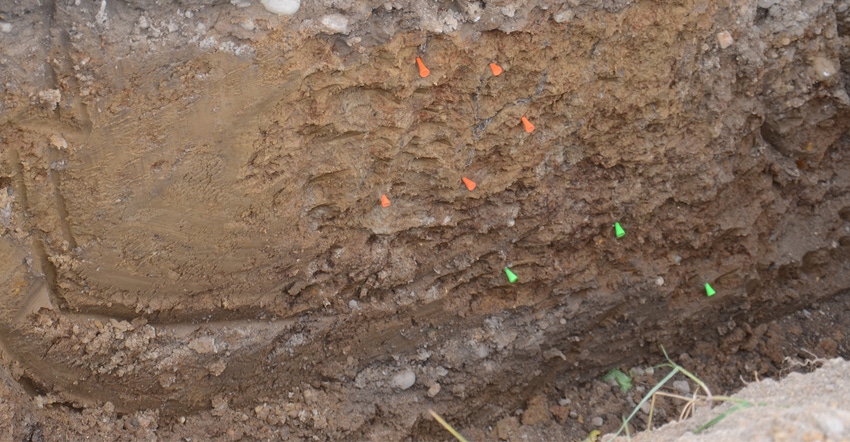
Jeremy Henry drove as far as 90 miles to drop off flyers about a soil health workshop his local soil and water conservation district was holding on his farm. Why? Because Henry, Connersville, Ind., is excited about no-till, cover crops and what improving soil health can do for crop yields.
“I wanted to spread the word, and give other farmers a chance to see why I’m excited about the potential for cover crops in a no-till system,” Henry says.
Dozens of farmers showed up on a cold Saturday morning in December. Many braved brisk winds to view soil pits Henry dug in two different types of cover crops. The pits illustrated how deep cover crop roots can go, even in marginal soil.
The first thing Henry shared with farmers attending the workshop was what he observed in 2016. In one field he no-tilled corn both behind a cover crop and without a cover crop. One of his primary cover crops is annual ryegrass.
Big yield boost
“It got very dry here in mid-July through mid-August,” Henry said. Even though much of Indiana was blessed with rain, his area hit a dry snag. He explained that it didn’t rain for roughly 25 to 30 days during that key period.
“We could tell that the part of the field where corn was planted after the cover crop was holding moisture better,” he said. “Stalks stayed healthier longer there late in the season.”
The real payoff came at harvest. “There was a 33-bushel-per-acre advantage for corn following cover crop vs. no cover crop,” he said, excitedly. Was it replicated testing? No. But that doesn't change the fact that it happened on this farm in this one season. It certainly stoked Henry’s desire to tell others about cover crops.
Late convert
Henry hasn’t been no-tilling or using cover crops for decades. In fact, he just began no-tilling a few years ago, and then worked his way into cover crops. Ironically, his wife, Tara, worked as a professional in the soil conservation field long before Henry moved away from conventional tillage.
“I work full time off the farm, and I needed to cut down on labor needs and improve timeliness,” he said. “That’s really why I tried no-till."
After he had also tried cover crops, he was impressed enough by the results that he began looking for ways to get them seeded sooner. His solution was building two different seeders: One seeds off his combine grain head, and the other seeds off his corn head.
Henry respects annual ryegrass when it comes to terminating it, but he isn’t afraid of it. “You just have to follow the right procedures, and time applications well in the spring,” he said.
One of those steps is not adding atrazine in the burndown mix. Another is lowering the pH of his hard water. If there are a few escapes, he comes back postemergence and cleans them up.
About the Author(s)
You May Also Like




